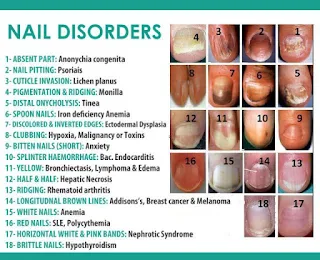Smileband supports 10 charitable organisations that support across the UK and the world, 222 News look in to researched information that is based around news and health related subjects, by entering your e mail and subscribing and verifying it in your e mail box, you are helping support 10 charities that we give money too. Also if a person’s information has been posted or shared and they don’t like it please contact us and we will have it removed, please follow our News.
Sunday, 17 December 2017
Smileband Health issues
It could be: Arterial disease. If the fuzz on your toes suddenly disappears, it could signal poor blood circulation caused by peripheral arterial disease (PAD). “Signs of PAD can include decreased hair growth on the feet and ankles, purplish toes, and thin or shiny skin,” says a health specialist , DPM, a podiatric surgeon at North Shore University Hospital in New York. A buildup of plaque in the leg arteries, PAD affects about 8 million Americans. Symptoms are subtle, but doctors can check for a healthy pulse in the foot or spot PAD on an X-ray. “If I take an X-ray of a broken foot, and I see a hardening of the arteries, 99 percent of the time, the same thing is happening in the heart blood vessels,” says Gary A. Pichney, DPM, a podiatric surgeon of The Institute for Foot and Ankle Reconstruction at Mercy Medical Center. It could be: Diabetes. Uncontrolled glucose levels can damage nerves and cause poor circulation, so blood doesn’t reach the feet. When blood doesn’t get to a wound caused by, say, irritating shoes, the skin doesn’t heal properly. “Many, many people with diabetes are diagnosed first because of foot problems,” says Reid. Other signs of diabetes may include tingling or numbness of the feet. Ask your doctor about getting your blood sugar levels tested. It could be: A heart infection. Red streaks underneath the toenails or fingernails could be broken blood vessels known as splinter hemorrhages. These occur when small blood clots damage the tiny capillaries under the nails. They can signal endocarditis, an infection of the heart’s inner lining. People who have an existing heart condition, have received a pacemaker, or who have chronically suppressed immune systems (such as cancer patients receiving chemotherapy, HIV patients, and diabetes patients) are at higher risk of developing endocarditis. The infection can result in heart failure if left untreated. If you notice splinter hemorrhages on your toenails or fingernails, and haven’t experienced any recent trauma to the nail, see your doctor to check your heart and blood circulation. It could be: Lung cancer or heart diseases .Another symptom that appears in both toes and fingers, clubbing is often associated with lung cancer, chronic lung infection, heart disease, or intestinal disease. Lung cancer and heart disease decrease vascular resistance, which means blood flow to the small arteries in the toenails and fingertips will increase. Tissue swells and results in the “clubbed” appearance (rounder, wider fingers and toes). Though patients are typically aware they have a disease that is causing the clubbing, it’s best to get checked if you see any abnormalities. (Here are some smart habits to prevent lung cancer -and it’s not just not smoking.) It could be: anemia or lupus . Do you have a depression in the toenail deep enough to hold a water droplet? Also known as koilonychias, spoon-shaped toenails or fingernails can indicate iron deficiency, as well as hemochromatosis (overproduction of iron), Raynaud’s disease (which affects blood supply to the fingers and toes), and sometimes lupus (an autoimmune disease in which the body’s immune system attacks cells, tissues, and organs). Spooned nails occasionally appear in infants, but normalize in the first few years of life. If you notice spooning, contact your physician, who will administer a blood test to identify the exact cause.
Subscribe to:
Post Comments (Atom)
Smileband News
Dear 222 News viewers, sponsored by smileband, The Dark Side of Porn: Its Impact on Young Minds, Adults, and the Cycle of Abuse In today’s ...
-
NORMAL MOLES are common small brown spots or growths on the skin that appear in the first few decades of life in almost everyone. Th...
-
T he White House has discussed using experimental microwave missiles against North Korea to disable Kim jong-un nukes, it has been r...
-
Smileband is bring a new health product to society as we care for people health due to getting infections and suffering from bad health issu...



No comments:
Post a Comment